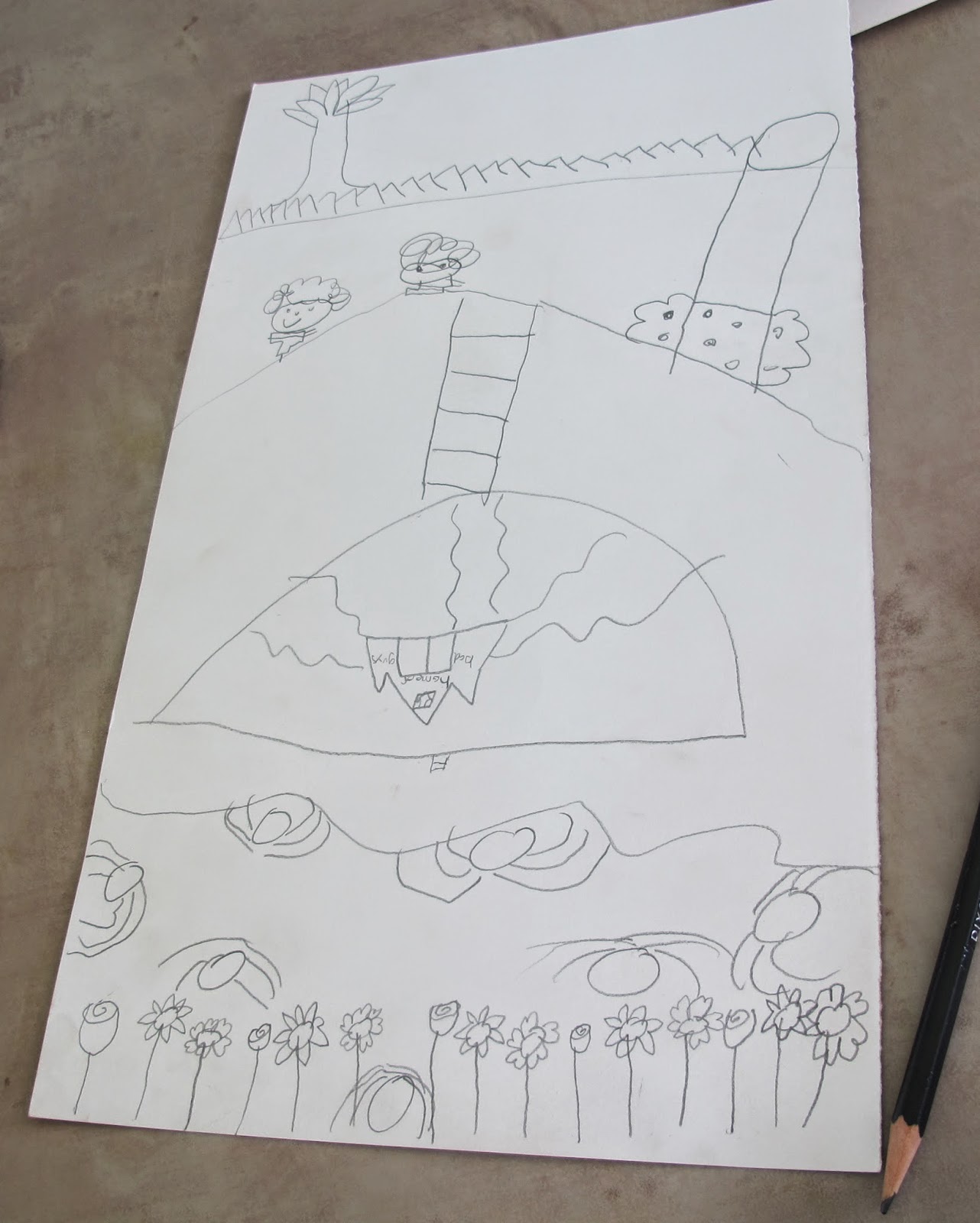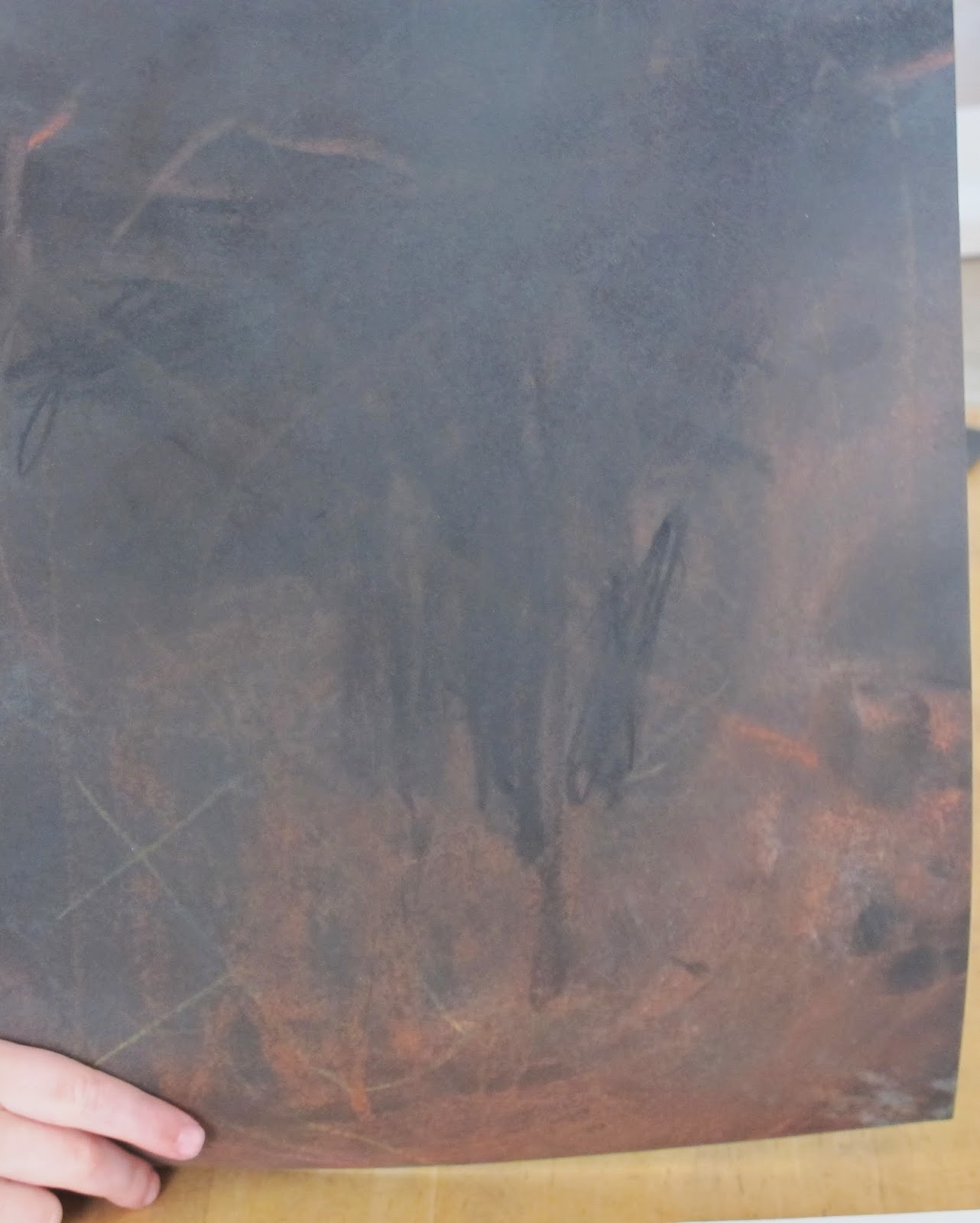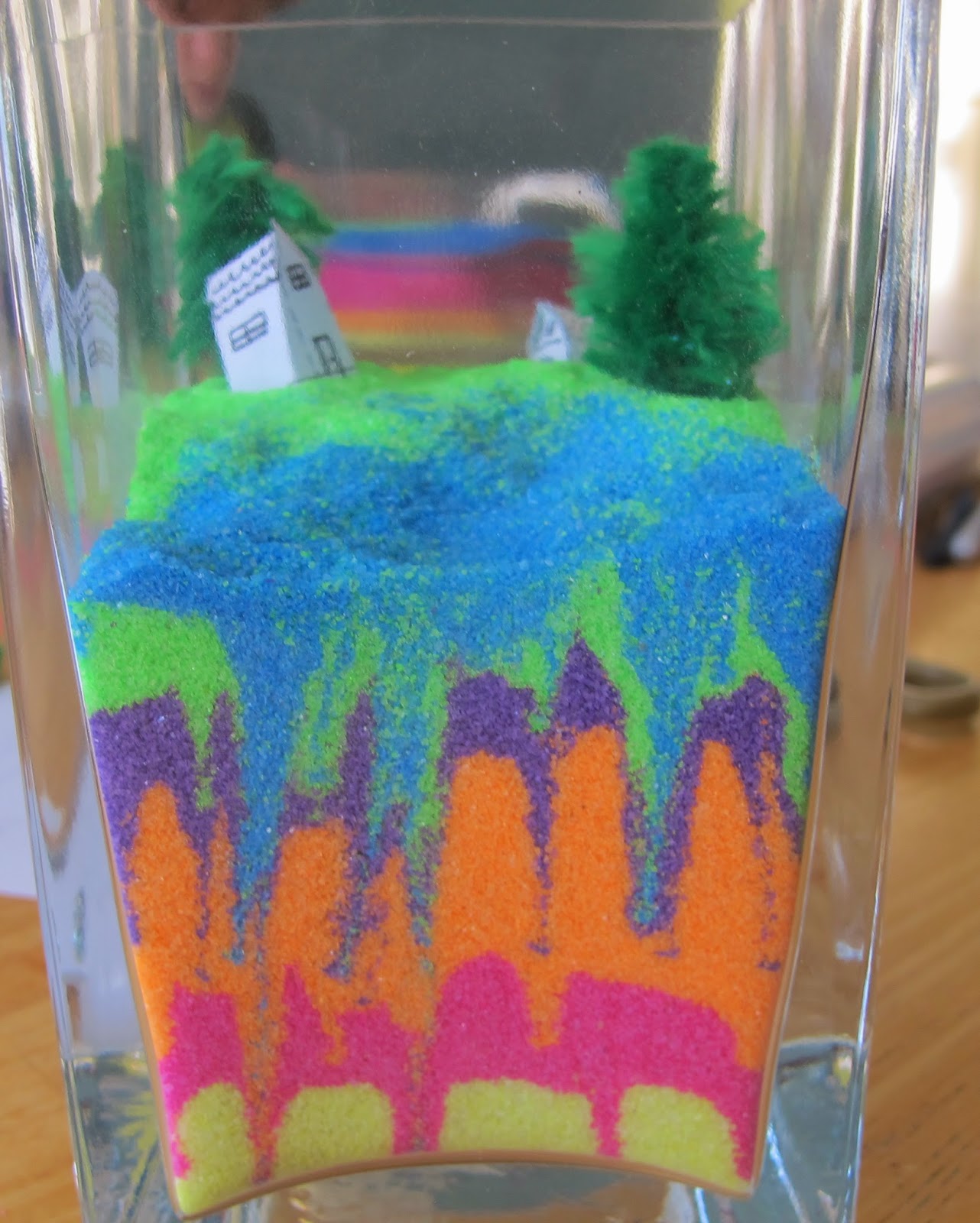
We know what's really underground, but what could be under that rock? Could that rock actually be part of a giant turtle? Something else?
This time we made detailed drawings using our imaginations of what might be under ground that we can't see. For the preschool class I put some items under a towel and asked them to guess what was under it before we started drawing.
I also showed the kids these images so they would really believe me that anything could be under ground in their pictures and they didn't need it to be realistic.
http://500px.com/photo/4621569/what-lies-beneath-by-gonzalo-villar and another picture I have pinned on Pinterest to my Art Warm-ups board. If you follow me you can hunt for it there. I can't seem to get to the actual picture to put a link here. It's a painting of an island village (old fairy tale style) on top of a kraken so it looks like the island is the kraken's head.
Some used markers or black felt tip pens for this one and some used pencils, but no erasers. I sometimes like to do drawing assignments where no erasers are allowed. I think sometimes kids spend too much time erasing instead of creating and drawing so this was one of those assignments. I also think it helps build confidence in your drawing abilities if you can practice drawing in ink and get comfortable with it. There are always some kids that don't like it at first, but I stick to my rule and let them know it isn't always going to be like that and my reasons behind it.
.jpg)















































